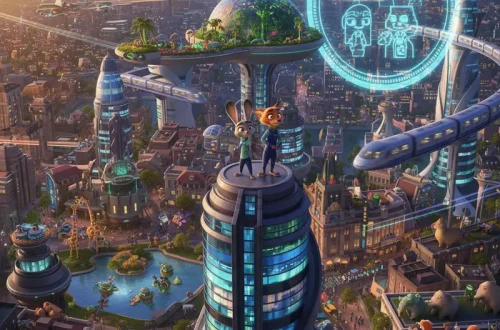
As I finally settled into the theater to catch Puss in Boots: The Last Wish, a wave of nostalgia washed over me. It’s not often that I make the trip for an animated film, considering my recent cinema ventures have largely been dominated by live-action blockbusters. Reflecting on my cinematic choices, it occurred to me that my recent choices have been constrained by the prevailing dominance of the superhero genre. In contrast, Puss in Boots: The Last Wish offered a refreshing departure, a vibrant, visually spectacular tale that left me yearning for the days when live-action blockbusters also evoked a similar sense of wonder and excitement.
Reminiscing about the last time I experienced such colorful, visually striking cinema, my mind wandered back to the days of my childhood. I recalled the allure of the Shrek franchise and the fascination of witnessing these fantastical worlds unfold on the big screen. Yet, more recently, the influx of superhero movies seems to have ushered in an era of predictability and visual homogeneity, leaving little room for the exuberance and vitality that characterized my cherished childhood movie experiences.
Puss in Boots: The Last Wish, with its dynamic blend of traditional Dreamworks animation and nuanced hand-drawn artistry, resonated deeply with my longing for the grandeur of the cinematic experience. Drawing inspiration from anime, the film’s action sequences were marked by an unmatched sense of choreography and artistic finesse, captivating the audience with their striking compositions and fluid movements. This infusion of diverse visual elements, reminiscent of recent animated successes like Spider-Man: Into the Spider-Verse and The Mitchells vs. the Machines, served as a testament to the creative potential of blending various animation styles to craft a visually rich and captivating narrative.

Beyond its artistic allure, the film’s narrative mastery shone through, weaving a compelling tale driven by relatable characters and their nuanced motivations. Each thread of the story, intricately woven around the pursuit of the Wishing Star, provided a platform for the characters to grapple with their fears, desires, and personal aspirations. Puss’s confrontation with the fear of mortality, Kitty Softpaws’ yearning for trust, Perrito’s quest for companionship, and Goldilocks’ search for a sense of belonging, all contributed to a multi-layered narrative that resonated deeply with the audience.
Furthermore, the movie’s conclusion, while hinting at a potential sequel, did not succumb to the familiar trappings of obligatory franchise expansion. Instead, it evoked a sense of anticipation akin to revisiting a beloved world long absent from the cinematic landscape. This notion of a well-deserved return, rather than an obligatory extension, underscores the film’s ability to carve its own niche within the broader context of the franchise’s cinematic universe.

Puss in Boots: The Last Wish serves as a testament to the power of storytelling and artistic expression, reigniting the fervor for immersive, visually striking cinematic experiences. As I reflect on the film’s evocative imagery and compelling narrative, I find myself yearning for a revival of the cinematic magic that characterized my earlier movie experiences. With a call for live-action blockbusters to embrace diversity in visual storytelling and evoke a renewed sense of wonder, Puss in Boots: The Last Wish stands as a beacon, reminding us of the boundless creative potential within the cinematic realm.
We bring out some of the most well-known Disney collection, all of which are available at reasonable costs. Visit our link now if you are interested in the Disney collection


Peter Pan, Wendy Darling, Tinker Bell, Captain Hook, Simba
